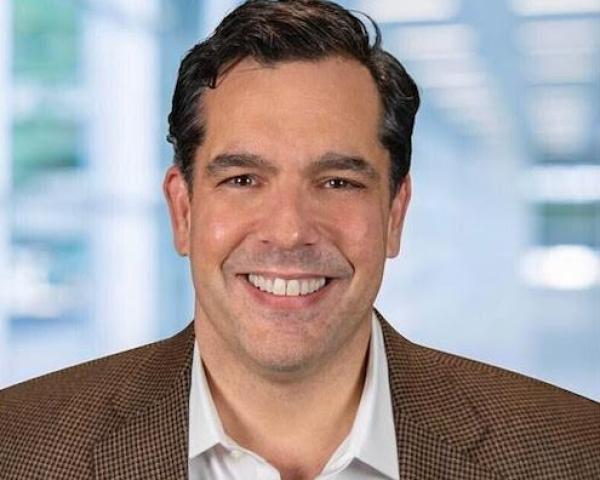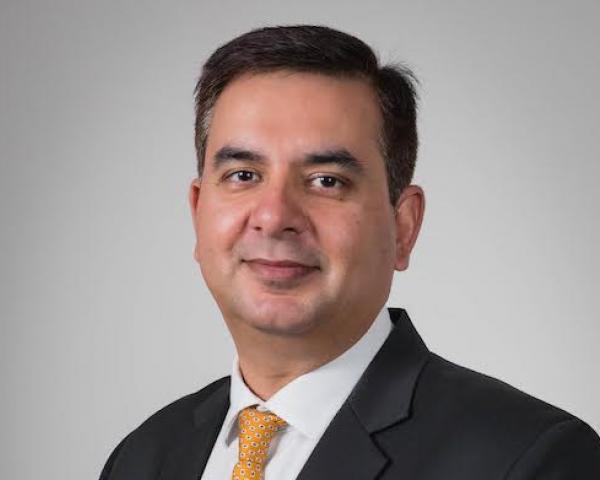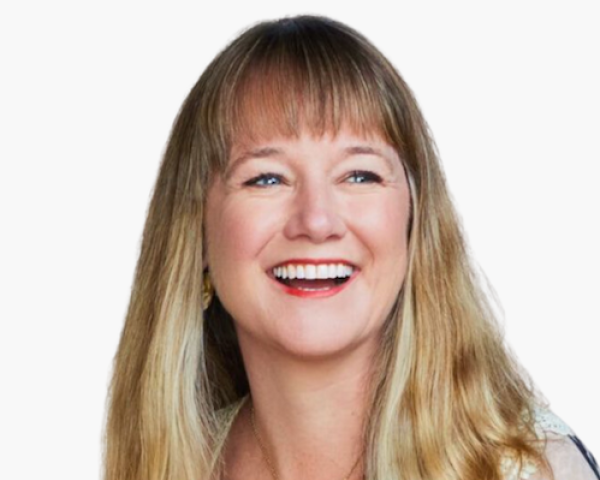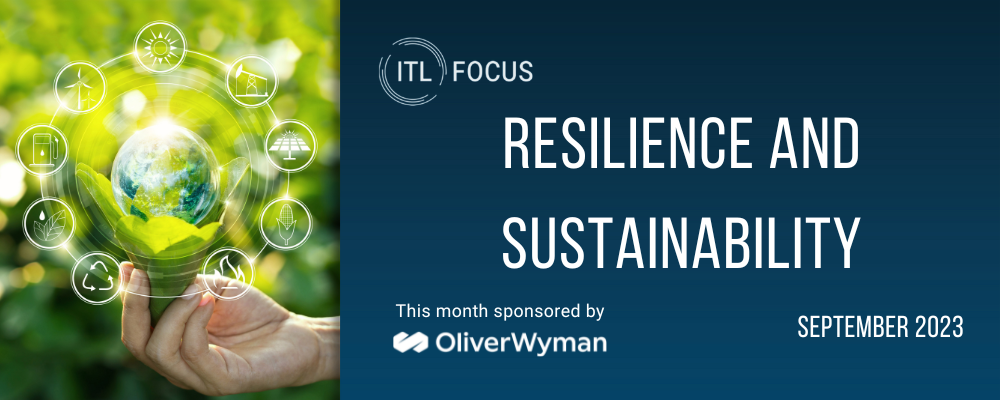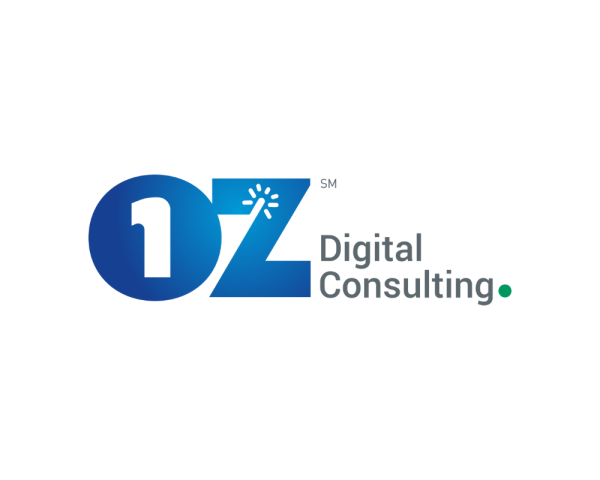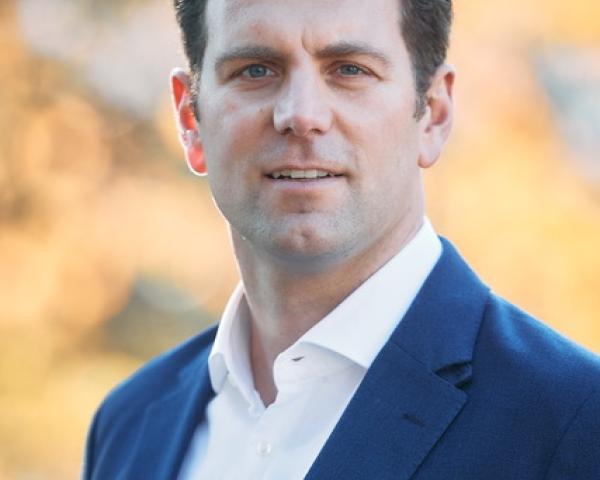
 |
For this month's ITL FOCUS on resilience and sustainability, we turned once again to Alex Wittenberg, a partner at Oliver Wyman, with whom we spoke a year ago. He says insurers are making real progress on understanding how to underwrite the transition away from fossil fuels and to renewable energy, but there's an awful lot of complexity that goes into that assessment.
While insurers have generally maintained their commitment to facilitating a clean-energy future, they have reoriented their approach. They recognize that even the most aggressive scenarios for a net-zero future envision heavy use of oil and gas in 2050, so insurers are taking more of a long-term view. They are also taking more of a portfolio view, looking at the whole mix of clients and their energy sources and at the mix of geographies where clients operate, rather than just viewing them as a series of individual companies.
And that's just the start of the adaptations insurers are making. Alex goes into detail below.
|
ITL:
We had an illuminating conversation a year ago about, among other things, the opportunities for insurers that will arise as the world shifts toward renewable energy sources but also about the difficulties of underwriting extraordinarily complex projects such as offshore wind. What are some of the big changes that have occurred since then?
Alex Wittenberg:
It’s a fairly significant development that major property/casualty insurers have departed from the NZIA [Net-Zero Insurance Alliance, whose members commit to decarbonizing their underwriting portfolios]. Last year, at this time, we were talking about how the NZIA was basically adding members every other week. Then, earlier this year, they started losing individual members, including the largest property/casualty insurers and reinsurers, such as Munich Re, Swiss Re, SCOR, Zurich and Allianz. Eventually, they lost all the founders, including the chair of the group, AXA XL.
There's a lot of speculation that the departures were driven by aggressive political tactics in the U.S. on behalf of approximately 23 state attorneys general, based on anti-competition allegations. That is not an insignificant reason, but the reality was that, as members got closer to following through on implementation, many also began to realize that perhaps they were on a pathway that wasn't aligned with their – or their insureds' – long-term view of an orderly energy transition. And for a lot of the insurers, there were practical considerations: “Are we ready to do this? Do we have the resources? Can we get the right information?”
If anything, NZIA implementation may have inadvertently created an energy transition with less financial underpinning.
If you consider the IEA [International Energy Agency] and its three different core scenarios for the energy future to 2050, whichever one you happen to believe, they all acknowledge that we are on a long journey.
To be clear, I don't think any insurers are stepping back from their individual corporate commitments. I think they're being more thoughtful about putting their commitments on a timeline that reflects the commercial reality of both the transition and of their insurance or reinsurance company.
ITL:
What does that look like? What should somebody be doing in 2024/2025 to support the longer-term energy transition?
Alex Wittenberg:
Well, there are a few things that we advocate. Increasingly, insurers are getting better at looking at their whole portfolio, as a collection of assets and not just as individual client names. If the insurer writes some oil and gas companies, utilities, pipelines, renewables – those are actually a collection of underlying assets with specific carbon attributes. Taking a portfolio view allows the insurer to consider how insuring specific organizations impacts their asset mix and to create the optimal mix of traditional and renewable sources that meets their transition pathway.
Also, insurers need to take a long-term view of their portfolio. It is more important for carriers to be going in the right direction with the right clients than it is to attempt a short-term overhaul of their book of business by applying rigid restrictions. There will be stops and starts driven by a variety of external factors that will make this a bumpy road, and each carrier will need to chart its own path to having the portfolio of clients and assets it wants in the long term.
ITL:
There’s been a backlash against ESG [environmental, social and governance efforts], especially in the U.S., not as much in Europe. I wonder whether insurance companies can go out and say they're trying to promote the energy transition and so forth, or whether they're having to back off on some of their pronouncements on the topic.
Alex Wittenberg:
I would separate supporting the energy transition from anything that's politically charged, on either the right or the left. I don't think there's a lot that's politically charged about saying you're supporting the long-term energy transition. I think many are recognizing that we're going to have a mix of fuels. Even in the most aggressive of the IEA scenarios, there will still be carbon-based fuels in the mix in 2050. So, I don't think anyone's denying that the transition is occurring, and that the transition needs to be supported. More importantly, insurers have a huge role to play in the transition.
Leaving politics aside, there's a lot of discussion about how we are going to finance the transition, but what’s often ignored is that not much gets financed that isn't insured. And the scale of this transition is significant.
It used to be that a power plant would get built in your state, and it would be insured, and the regulators didn't really think about the insurance. Now, due to the scale, exposure and complexity – such as found in offshore wind – insurance capacity is becoming increasingly scarce. It is increasingly clear that facilities of this nature are not going to be insured in the same way it would have been 10 years ago or even when the project was conceived. The insurance industry has a critical role to play in mobilizing the capital to underpin these projects so that they actually get done.
I know it sounds kind of trite, but the expression we use is, “No insurance, no finance. No finance, no project. No project, no transition.” In my 30 years of doing this, insurance isn't usually considered the linchpin of anything, but in this case it will be a key element for the energy transition to move forward at the scale required.
ITL:
I know we talked about some of this last year, but can you walk me through offshore wind? How would that work? I assume onshore wind is sort of quantifiable. We've done it. But walk me through the complexity of an offshore project.
Alex Wittenberg:
None of this has gotten particularly better since we talked last year. Large losses are occurring across a variety of renewable and traditional energy sources, and the projects are getting significantly larger and are being situated in more challenging locations.
Utility-scale renewables projects in solar, wind and storage are unique projects and are leveraging constantly evolving technology. Underwriters do not have the benefit of decades of historical exposure and loss data to evaluate future performance and price risk with precision, and understanding the engineering complexity has been a constant challenge.
The scale of these projects is also difficult to understand. You're talking about something that is huge. In offshore wind, if you consider the GE Haliade-X wind turbine, the mast height can be up to 260 meters (the Eiffel Tower is 300 meters), and an individual blade is 100 meters long, making a 220-meter rotor. A single turbine can generate up to 14MW of power. And a single wind farm may have upwards of 200 of these turbines. (Note that the largest approved U.S. offshore wind project is Ocean 1, with 98 turbines planned; Dogger Bank in the U.K. has 270).
Complicating the obvious potential are offshore losses, which can be costly and difficult to resolve. While there is a clear physical damage component to losses, business interruption costs can be more significant and less predictable, often exacerbated by a lack of available vessels to make repairs. The supply chain implications for replacement parts, such as turbines, transformers or cables, and potential obsolescence issues, also impact loss quantums and are dependent on backlog at the manufacturers of critical equipment. And the longer the interruption, the more cost the insurers incur, as the operator continues to have an obligation to provide power.
ITL:
If I'm trying to find financing for offshore wind, to stick with that example, and I have to get the insurance, how do I work through this with an insurance company?
Alex Wittenberg:
The public utilities commission (PUC) in a jurisdiction usually has authority over new projects, and they're used to seeing insurance included, usually a fairly significant amount. Due to the reasons we've discussed, the companies deploying these projects are going to have to resort to different risk finance structures. They're going to involve larger retentions, likely through increased participation from corporate captives; they’re likely to involve a smaller commercial insurance market participation excess of a much larger retention and with significant sub-limits for natural catastrophe perils. And they may involve catastrophe bonds (CAT) bonds or parametric products if the projects are CAT-exposed.
The problem is that your typical PUC is not populated with insurance experts who are going to fully understand these types of complex structures. They are going to want to see traditional insurance with reasonable retentions, because from their standpoint that is how you best insulate the rate base.
But that's not realistic.
There's a huge educational component, because the ways that a project may have to resort to transferring risk aren't necessarily bad, they're just different. A project will effectively transfer the risk or diffuse the risk into different pools of capital via an insurance company or a series of insurance companies. That educational piece is something that isn't easy to do but needs to be done.
ITL:
It sounds like a massive project for the insurers, too, to get smart about these complex projects.
Alex Wittenberg:
Many insurers we work with on the energy transition will readily admit that they need more technical advice and technical support. But there is a definite scarcity of quality resources, so they can’t all acquire the resources that they need. A lot of the strong technical people, especially in renewables and alternative fuels, are not going to be working for an insurance company; rather, they will be on the front lines of renewables and fuel development.
There is a larger pool of engineers who join insurance carriers after a long career elsewhere. In the nuclear space, perhaps they come out of the U.S. Navy, and they join an insurer as an engineer in one of the nuclear pools. But in renewables, it's not quite the same. There's not a backlog of folks who have been doing this for decades and are looking for a transition.
The second issue is converting technical knowledge into underwriting advice. It's one thing to say, "Well, we understand failure rates, and we understand the failure rates under different meteorological circumstances.” But now you need to turn that knowledge into a price. So insurers need to get a lot better about understanding and pricing the risks, and they need to do it without running egregious loss ratios as they learn. And those that have experienced losses or underpriced the risks often curtail their appetite or retreat altogether. It's a challenge.
Are there ways out of these challenges? Absolutely. Over time, the markets are likely to settle out, and probably in a different place than they are today. I think some of the carriers are going to say, "OK, we're going to write this, but we're not going to write it the way that we used to write everything else in our energy portfolio. We’re going to want to define our appetite for certain technologies, we're going to want to increase deductibles and we're going to sublimit specific perils and be more precise about geographic concentration."
Over time, both individual carriers and the overall market are going to better understand the underlying drivers of profitability and provide a much more stable, albeit potentially smaller, source of capacity. I think they are already getting there.
Another complicating factor, beyond underwriting and technical concerns, is that the carrier management teams are still wrestling with reconciling the commercial reality of the long-term transition in their energy books and their public climate commitments. These internal contradictions are difficult to resolve in the short term and lead to insurer underwriting decisions that can seem inconsistent to both brokers and insureds.
ITL:
We had a conversation last year about many of these topics, and we are having one again this year. Let’s say we have one next year. Are we making progress?
Alex Wittenberg:
Most insurers, when they left the NZIA, recognized that they were going to have to take a lot more responsibility to support the energy transition and couldn’t just rely on third-party scoring of the names in their portfolio. They were going to really need to understand the underlying data and underlying assets in their portfolios and how they wanted to manage their portfolio and its transition over the long term.
Many companies are certainly undertaking the necessary work, and that’s progress. However, this isn't going to be something that can be easily fixed in a couple years. This isn’t just about setting guidelines for an internal referral network that will say "yes" or "no" to offering coverage; there needs to be a sincere effort to understand what is in the portfolio, the planned changes in the insured’s asset mixes and the targeting of new clients. Insurers are starting to understand the implications of their commitments and how to align those with the transition of the energy book. That's all positive.
The other real positive is the long-term approach. There are a lot of ways to look at the energy transition. Some insurers are more conservative and will stick with a portfolio that has more traditional energy within it and migrate over time. Some will want to move faster to new sources. The marketplace needs an assortment of carrier approaches to ensure an orderly transition, and while it will not be smooth it seems to be moving in the right direction.
Insurers are trying to solve problems, too. The industry is moving forward; the market is not sitting still. A lot of large insurers are making themselves available to support the energy transition by supporting traditional energy assets in portfolios, while insureds work to address real world challenges such as providing affordable, reliable baseload power.
ITL:
The New York Times had a piece recently saying that new, renewable energy sources are coming online faster than people thought, but I worry a lot about the grid. It just can’t do what we need it to do. It seems to me that we almost need to start over and declare that we're going to build an interstate highway system of the grid.
Alex Wittenberg:
A big challenge is that many new renewable generation facilities aren’t near an interconnection point with the existing grid. Also, the public doesn’t necessarily want utility scale generation nearby. New transmission and distribution and other grid infrastructure must be considered a priority if the energy transition is to occur at scale.
Unfortunately, insurers don’t usually want to insure operating, above-ground transmission and distribution lines. Construction of the grid would be fine from an insurer's perspective. It’s when you turn it on and make it susceptible to a variety of perils that it becomes less attractive.
ITL:
That makes sense. I found this fascinating. Anything I didn't touch on that you want to talk about from a personal or an Oliver Wyman perspective?
Alex Wittenberg:
There's one thing that I think insureds could do better and could think about more strategically. Energy is a global industry, right? Everyone generates power, needs power, transportation fuels, etc. But in the U.S., an individual utility tends to be organized by state, or maybe in their region of the country. The same occurs in Canada.
The insurance industry is different, it is a very globally fluid capital market. And although insurers are based in certain places and get regulated by individual states or countries, the capital tends to flow to where it can generate the best returns. That means the insureds need to think about the implications of their strategies on their ability to attract insurance capital in a globally competitive marketplace.
It's also important that the insurer looks at their energy portfolio across all of their geographies, so they can make equitable decisions on where to accelerate the move to renewables as an offset to a slower pace in another part of the world.
I’ll add that I'm still very positive directionally, actually more positive than I was last year. Last year felt a little dire, as though the insurance industry was basically going to abandon the ship, and there were not going to be sufficient options to address the projects that are required to accelerate the transition. While working with a number of the large commercial insurers and energy specialist markets, we have found that they are committed to thinking strategically about solving for the energy transition challenges, even if it means charting a new path.
ITL:
This was great. Thank you for your time, Alex.



